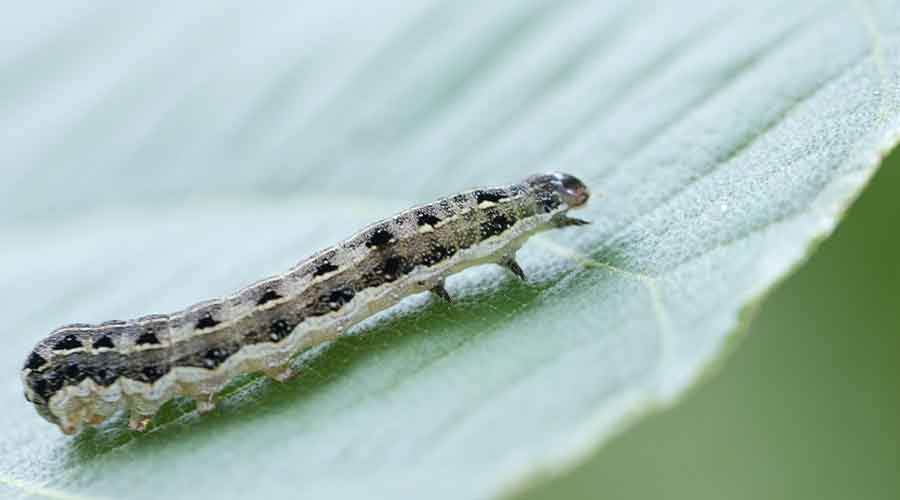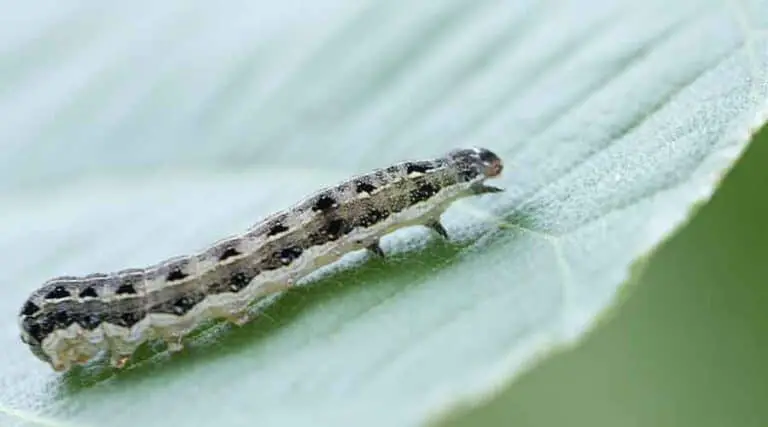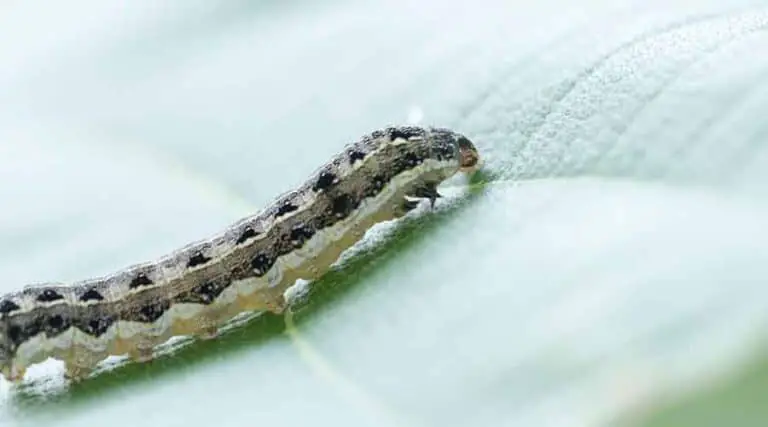Are Cutworms Harmful to Dogs: Unveiling the Truth
Cutworms are a type of nocturnal caterpillar known to cause damage to various plants, especially affecting gardens and crops. They are part of the moth family and typically feed on the stems and leaves of plants, often leading to the death of the plant. Given their prevalence and potential for causing harm to plants, it is natural to wonder if these pests might pose a threat to pets, particularly dogs.
There is little evidence to suggest that cutworms are harmful to dogs. Most cutworm species are not harmful to humans or pets, making them unlikely to cause significant harm if ingested. While their consumption should still be discouraged, it is important to note that they are primarily a concern for gardens and crops rather than a direct danger to dogs.
To protect both your plants and your pets from cutworms, it is essential to maintain a well-kept garden and use environmentally friendly pest control methods. This will minimize any potential interaction between your pets and cutworms while also protecting your plants.
Are Cutworms Harmful to Dogs
Cutworms as Ingestion Hazards
Cutworms are a type of caterpillar that typically feed on plants and can sometimes be found in gardens or lawns. Although there have been reports of dogs ingesting cutworms, it is not common for these insects to cause significant harm to dogs when ingested. However, it’s essential to keep an eye on your dog if you suspect they have consumed cutworms, as individual reactions may vary, and some dogs might experience gastrointestinal upset.
It’s also important to note that the potential hazards associated with cutworms may be exacerbated if they have come into contact with insecticides or other harmful substances. Be cautious and ensure your dog is not consuming cutworms from an area treated with chemicals.
Cutworms as Infestation Risks
While cutworm infestations in homes and garages have been reported before, it is relatively rare for these insects to pose a direct risk to dogs through infestation. Cutworms are more of a nuisance to plant life and primarily focus on feeding on plant material.
To help reduce the likelihood of cutworm infestations and the associated risks to your pets, consider implementing preventative measures, such as:
- Regularly inspecting and maintaining your garden to discourage cutworm presence
- Applying natural or pet-safe insecticides to affected areas
- Keeping your dog’s outdoor play areas clean and free from plant debris where cutworms might thrive
By taking these precautions, you can minimize both the risks associated with cutworm ingestion and any potential infestations that could impact your dog’s well-being.

Identifying Cutworms
Cutworms are a group of moth larvae that primarily feed on plants at night by cutting off their stem near the soil level, hence the name cutworm. There are numerous species of cutworms, but they all share some common traits. Identifying cutworms is essential for proper pest control and to ensure the safety of pets like dogs, although there isn’t any clear evidence that cutworms are harmful to dogs.
These larvae have a cylindrical body that can vary in color from light gray to dark brown or even green. The length of a cutworm ranges from 1 to 2 inches, and they tend to have smooth or faintly lined body segments.
To search for cutworms, one must inspect the plants or the soil surrounding damaged plants. Keep an eye out for the following signs:
- Damaged plants with severed stems
- Irregular holes in leaves
- Larvae curled up in the soil or under debris
- Presence of frass (insect feces) near damaged plants
When you find a potential cutworm, confirm its identity by checking whether it curls up into a “C” shape when disturbed, a characteristic defensive posture of cutworms.
Cutworms can prove to be a nuisance for gardeners and farmers, but their effects on dogs are less clear. It’s always crucial to monitor your dog’s behavior and contact a veterinarian if you observe any unusual symptoms.

Preventing and Managing Cutworm Exposure
Cutworms are larvae of noctuid moths that can cause damage to various plants and grasses. While they pose a potential threat to lawns and gardens, the impact on dogs is generally focused on gastric upset if your pet ingests the cutworm larvae. Proper lawn care, encouraging natural predators, and applying pesticide safety precautions can help protect your dogs from cutworms.
Regular Lawn Care
Maintaining a healthy lawn is one way to prevent and manage cutworm exposure.
- Mow your lawn regularly with a height of at least 3 inches to promote strong grass growth.
- Water your lawn deeply but infrequently to encourage deep root growth. Aim for about 1 inch of water per week.
- Aerate your lawn annually or every other year to improve soil health and promote better grass growth.
- Apply organic fertilizers as necessary, adding nutrients that support grass growth and can help deter cutworms.
Natural Predators
Encouraging natural predators of cutworms can also help keep their population under control. Some common predators include:
- Birds: Attracting species like robins, bluebirds, and sparrows can help reduce cutworm populations.
- Ground beetles: These insects feed on cutworms and can help manage their population.
- Entomopathogenic nematodes: These microscopic worms can be introduced to your lawn to target and kill cutworms. They can be purchased through garden suppliers or online resources.
Pesticide Safety Precautions
When using pesticides to control cutworms, follow these safety precautions to prevent harm to your dogs:
- Choose insecticides specifically labeled for cutworm control.
- Apply pesticides according to label instructions and follow all safety guidelines.
- Limit your dog’s access to the treated area until the pesticide has dried or as recommended by the product label.
- Store pesticides safely and out of reach of your pets.
By implementing these strategies, you can help protect your lawn and your dogs from the potential harm caused by cutworms.
Recognizing and Treating Dog Exposure to Cutworms
Cutworms are the larvae stage of various moth species and are known to cause damage to plants and crops. Although cutworms aren’t generally harmful to dogs, if ingested, the cutworm larvae can cause gastric upset and even make your dog feel sick. In this section, we will discuss the symptoms of ingestion or infestation in dogs, and the available veterinary treatment options.
Symptoms of Ingestion or Infestation
If your dog has been exposed to or has ingested cutworms, these are some possible symptoms to look for:
- Vomiting
- Diarrhea
- Loss of appetite
- Abdominal discomfort
It’s important to keep an eye on your dog if you suspect they may have eaten cutworms, as symptoms may not be immediate and can take some time to develop. If you notice any of these symptoms or your dog seems unwell, contact your veterinarian for advice and further information.
Veterinary Treatment Options
The primary goal of treating a dog that has ingested cutworms is to ensure they are comfortable and address any symptoms they may be experiencing. Your veterinarian may suggest the following treatment options:
- Monitoring: Keep a close eye on your dog’s condition and report any symptoms or changes to your veterinarian.
- Fluids: If your dog is experiencing vomiting or diarrhea, they may require fluid administration to prevent dehydration and maintain electrolyte balance.
- Gastrointestinal protectants: Administering medications that help protect the stomach lining can minimize gastric irritation and potential discomfort.
- Dietary management: Feeding a bland diet that is easily digestible can help alleviate gastrointestinal upset and promote recovery.
In most cases, dogs will recover from a cutworm ingestion or infestation with proper veterinary care and treatment. It’s important to monitor your dog closely and follow your veterinarian’s advice to ensure their swift recovery.






